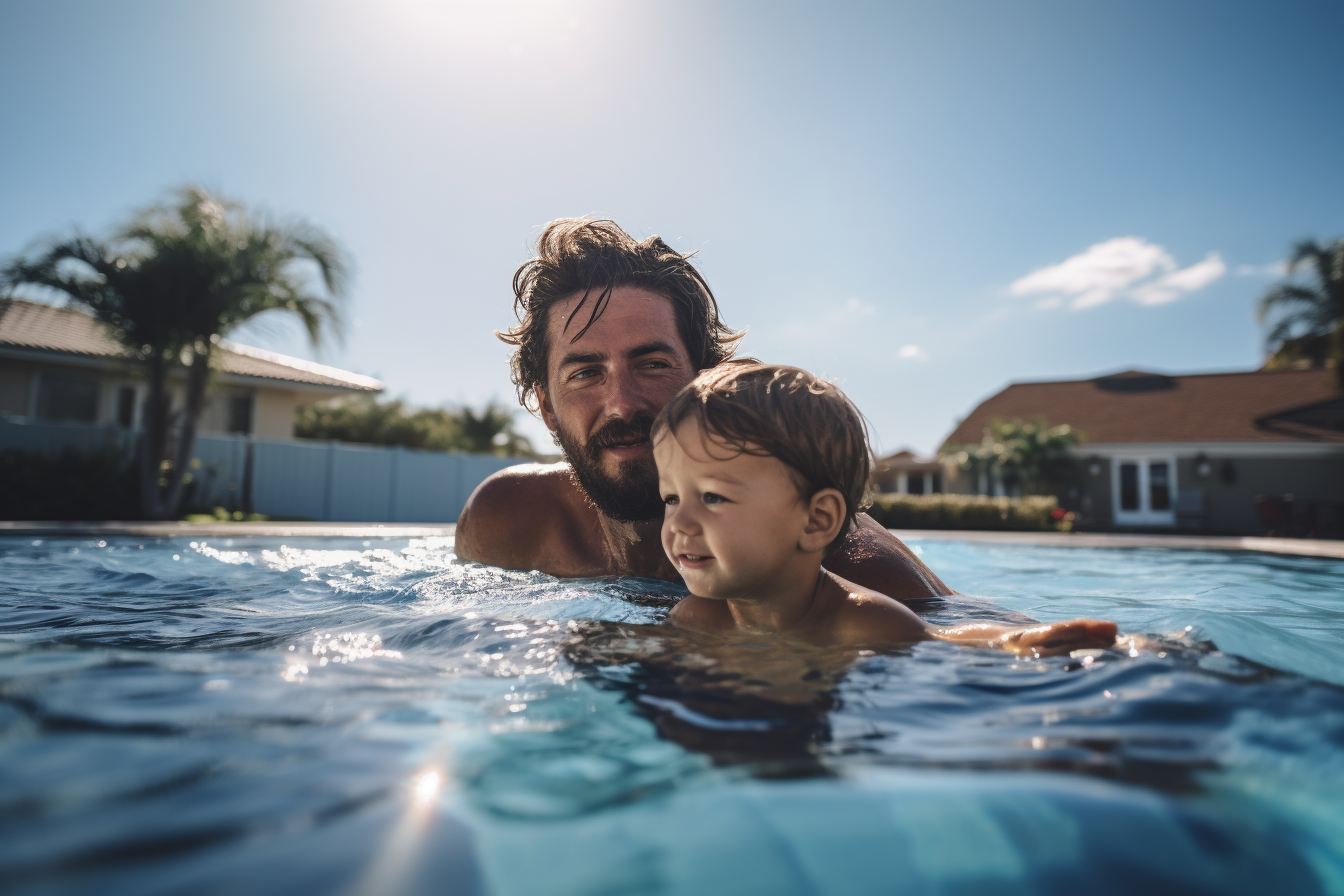Childproofing a pool is a vital responsibility for any homeowner, parent, or caregiver with access to a swimming pool. The joy and relaxation that a pool can provide come with serious risks, especially for children. This article offers a comprehensive guide to ensuring that your pool is as safe as possible for the little ones.
Understanding the Risks
Statistics on Pool Accidents
Every year, alarming numbers of children are involved in pool-related accidents. Understanding these statistics underscores the importance of taking pool safety seriously.
Common Dangers Around Pools
Slips, falls, and drowning are common dangers around pools. Identifying these risks helps in implementing effective safety measures.
Layers of Protection
Adult Supervision
The most significant factor in preventing accidents is vigilant adult supervision. No device or barrier can replace the watchful eye of a responsible adult.
Fencing and Gates
Installing a four-sided pool safety fence that’s at least 4-5 feet tall around the pool can prevent unauthorized access. Gates should be self-closing and self-latching, with latches out of reach of children.
Pool Nets
Pool nets stretch over the entire pool and anchor to mounted fasteners on the pool’s sides, protecting children from falling into the water.
Alarms and Wearable Devices
In-pool alarms and wearable devices can alert caregivers if a child enters the pool area or falls into the water.
Safety Equipment
Pool Alarms
Various types of pool alarms detect movement in the water and sound an alert, providing an additional layer of protection.
Safety Turtle Wristbands
These wearable devices trigger an alarm if submerged in water, offering peace of mind for parents and caregivers.
Lifebuoys
Lifebuoys and other flotation devices should be readily available in case of an emergency.
Pool Maintenance
Regular Inspection
Regularly inspecting the pool area for potential hazards and addressing them promptly is essential for maintaining a safe environment.
Repairing Broken or Missing Drain Covers
Broken or missing drain covers can trap swimmers underwater. Ensuring that all covers are intact and securely fastened is crucial.
Teaching Safety
Swim Lessons
Teaching children how to swim and educating them about pool safety can significantly reduce the risk of accidents.
Rules and Behavior Around the Pool
Establishing and enforcing rules around the pool helps children understand the importance of safe behavior.
Additional Tips
Removing Toys After Swimming
Leaving toys in the pool can tempt children to reach for them, leading to accidents. Always remove toys after swimming.
CPR Training for Caregivers
CPR training for adults in the household can be a lifesaving skill in an emergency.
Draining Inflatable Baby Pools
Inflatable baby pools should be drained after each use to eliminate the risk of small children falling in.
Environmental Considerations
Impact on Plants and Soil
Consider the environmental impact of pool safety measures, such as the effect of salt on nearby plants and soil.
——————–
Childproofing a pool is a multifaceted task that requires diligence, awareness, and ongoing effort. By implementing the measures outlined in this article, you can create a safer environment for children and enjoy the peace of mind that comes with knowing that your pool is as secure as possible.

